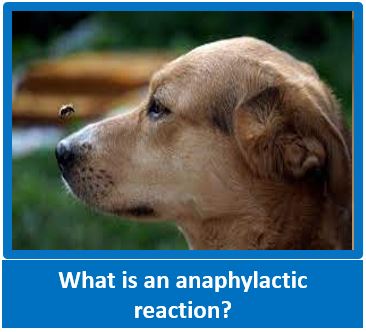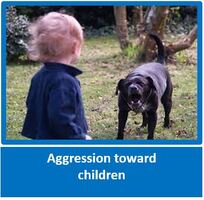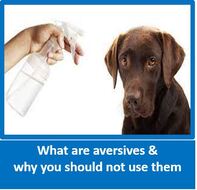
Please visit and LIKE our Facebook Page and share with family, friends and on your own Facebook page, and ask them to share further – it is only by working together and sharing knowledge and education that we can improve the lives of dogs and assist owners. We do not inundate you with posts – an average of 5 per week, and the odd Did You Know. Thank You!
My new shelter dog is not settling down – why – what do I do?
Scotty Valadao - Canine Behaviourist - TTouch Practitioner
On average, a dog will adjust to its new home within 2 -3 weeks and will then feel more settled and secure but this is not always the case. I have come across many rescue dogs that just don’t seem to be able to settle in the new environment and the new owner is at a loss to know why.
The most common type of behaviour observed is the dog that is aloof, not interested in its new family, wants to spend time alone and seems to make no effort at all to fit in. While all the family will be in the lounge watching tv, this particular dog will be in a bedroom, outside etc, even when having been with the family for a long period of time. As we can’t read dogs minds, it is difficult to determine exactly what causes this to happen, but from the backgrounds obtained, this seems to occur more in dogs that appeared to have a strong bond with their previous families, have perhaps lost a beloved owner due to illness or death and the dog may even be waiting for its previous owner to appear and take it home. Another example that seems to occur, is the dog that has been rehomed a few times and then returned to the shelter for one reason or other - remember, that if your new dog does have existing behaviour concerns, you can seek provisional assistance.
In some cases it has been dogs that have spent a long period of time in shelters before being adopted . Many of these shelters have very high noise level and are busy places with people walking to and from, buckets and food bins being banged, hose pipes washing out the run, dogs barking and whining, and dogs that are not always suited to being together are placed either together, or in a run next to one another. All these factors can impact on a dog and cause high levels of stress and even depression.
Other types of dogs that often fall into the ‘battling to settle category’ when being re-homed, are dogs that were bottle fed as pups or taken away from their mother and siblings before 8 weeks of age. Of course, unless you have a background confirming same, this cannot be determined.
Perhaps the dog just views the new owner as one of the many that have walked past its run in the past and one day they too will simply disappear. We really don't know why, we have experienced is that we can help these dogs to feel more secure and start to accept the new family more.
It is also possible that depression has occurred and vet help will be needed. Just like people, dogs do seem to become depressed as people do - although as we cant ask them how they are feeling. Dog depression symptoms seem to be similar to those in people - they become withdrawn, are inactive, eating and sleeping patterns can change, they don't want to participate with rest of family (often both humans and other animals). We also have to bear in mind that illness can be present as well and causing the dog to appear depressed, so a vet check is always your first step - if no physical component, the vet may prescribe vet meds to assist.
Here are some of the things to try and consider:-
- Don’t force yourself on the dog. Rather have short periods of positive interaction with the dog and in between, leave it alone. Try leaving the dog with a nice chew toy such as a Kong that is stuffed.
- Don’t ‘pander’ to the dog. We as humans like to ‘fix’ things and the more you try to comfort the dog, there is the possibility that the dog will become more withdrawn. To a dog, a natural leader is somebody that is calm, is in control, looks after its pack etc, and not somebody who is constantly trying to comfort and interact with it. Taking the position of being in charge of the human/canine social structure will help the dog to feel more secure.
- Try to determine what the dog really likes. It could be a game of ball, pullies with a rope, a soft toy being thrown. Don't throw the ball from one end of the garden to the other initially, this does not always work – rather bounce the ball up and down in front of the dog, then toss a few inches away, and as the dog starts to get interested, then slowly build up the distance – the same with the pull rope and soft toy. Have frequent, short games with the dog in this manner and a good idea is to stop this interaction just before the dog gets tired of it - they then seem to look forward to the next interaction again, but do remember, very short interactions.
- If the dog is not toy driven, but instead prefers food, then supply plenty of appealing chew toys that can be stuffed. Many vets are against giving dog bones, but do check with your vet if a large, raw femur bone could be given for a short period of time - most dogs really love these. It can be popped in the fridge with a cloth over it in-between. Chop and change these frequently to provide variety and stimulation.
- When the dog seems more relaxed and is enjoying the bone/chew toy, instead of leaving him alone to enjoy it, place a special cushion for him in the lounge or kitchen and place the bone on this - if other dogs do ensure that no resource guarding. Do this for short intervals of time and make sure that the area the dog is in is not too rowdy and no other dogs to compete for the bone. This helps to slowly build up the dogs association that being with people is a good thing. At the same time, you can tell the dog from time to time ‘good dog, clever dog’, further building up the positive association.
- A lovely ‘scent/smell’ filled walk even just outside the property can work wonders. Firstly ensure that the dog cannot get out of walking equipment used, and allow the dog to sniff and smell to its heart’s content. In humans, it has been shown that exercise has an effect on our serotonin levels (the happy hormone) and I have seen the same thing happen with dogs. A dog’s sense of smell is about 45 stronger than a humans, and this is approximately over two millions more scent cells than we humans have. A dog ‘needs’ to sniff and smell to relax and stimulate itself and I have seen many dogs where they just could not appear to cope, appear instantly happier after a short sniff around, outside the property. Keep these walks very short, even just 5 minutes at a time initially.
- Another thing you can do where food is involved, is instead of feeding the dog out of the bowl twice a day, start to feed portions of food by hand, simply calling the dog to you and awarding a few pieces of kibble at a time. Don't use the whole of the dogs meal initially, start with a handful and you can gradually build it up. This further associates you with ‘good things’ and will help to build up the bond.
- TTouch. I have been involved in this wonderful modality for years now and am still blown away by the changes that can occur when it is used with fear and stress behaviour and dogs that are not settling down in their new homes. (mind you I have never yet come across a situation where it does not help!). The ideal situation would be to have somebody come in and teach you how to do the TTouch, or even attend a workshop, but even the basic Ear TTouch below can impact on the dog.
Here is a link to how TTouch impact on the dogs nervous systems for those of you that want to learn more about this aspect.





